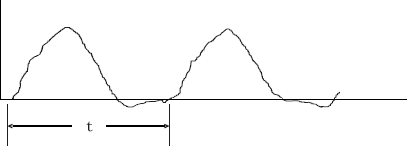Common types of surges experienced are capacitor charge / discharge – normally
Based on this information the application lab at HTR has put together some interesting data / information which should be taken into account by the design engineer when selecting a resistor for a circuit which will encounter either short-time overload or surge conditions.
It can be seen that in the above case the H2BA type which is rated as 2.5W is capable of dissipating 12.5W for 5 secs. In terms of energy, this corresponds to 62.5 Joules.
The danger over here is that it might be thought that this device is capable of handling 62.5 Joules irrespective of the overload duration.
At this point it must be remembered that it takes a finite time for the heat produced to be properly distributed through out the resistor body and therefore it is necessary to impose limits on the applied pulse energy so as to prevent excessive stresses due to thermal shock damaging the component.
Now suppose the same 2.5W 4K0 ± 5% resistor is subjected to 10000 volts for 1.5 milli sec, the energy is 37.5 Joules as per the formula given below:
E = (V2/R) x t = (10000 x 10000/4000) x 0.0015 sec. = 37.5 Joules.
Now, 37.5 Joules is within the 62.5 Joules shown above but it must be remembered that it would take longer than 1.5 mili sec for the heat produced in the wire to flow into the surrounding materials and therefore the temperature of the wire would rise far beyond what it was intended to handle and if the wire is subjected to temperatures which are beyond its operating limits the resistance value of the resistor will change excessively, the coating can be damaged and in extreme cases the resistance wire itself can melt which will render the component useless.
Therefore since resistors can be subjected to different types of pulses, it is very necessary to take into consideration the pulse width duration and the applied pulse voltage / power.
A general point to be noted is that the average power of the pulse applied should not exceed the rated power of the resistor.
Also the term pulse implies a single pulse applied to a resistor, which is not already dissipating power and is in an ambient temperature of 70°C or less.
HTR has collected data for 2 different pulse ratings for their most popular standard
wire wound resistors which should be referred to as given below for the safe operations of the resistors.
For very short pulses which are < 1 mili sec (1.2/50 Micro sec as defined by IEC 61000-4-5 & ANSI C 62.41), please refer to Table below.
For pulses > 100 milli sec upto 5 secs, the short time overload capability (STOL) calculation as shown above should be referred to
The voltage in the tables below have been determined at 0.02 mm dia wire resistance values
| HIA Series |
| Sr. No. |
Type |
Maximum Voltage as per IEC 61000-4-5 & ANSI C 62.41 |
| 1 |
H1 |
6100 V |
| 2 |
H2 |
9200 V |
| 3 |
H3A |
12400 V |
| 4 |
H3 |
13100 V |
| 5 |
H4 |
13100 V |
| 6 |
H5A |
15000 V |
| 7 |
H5 |
15000 V |
| 8 |
H7A |
15000 V |
| 9 |
H10/H10A |
15000 V |
| 10 |
H15 |
15000 V |
| 11 |
H20 |
15000 V |
| HIP Series |
| Sr. No. |
Type |
Maximum Voltage as per IEC 61000-4-5 & ANSI C 62.41 |
| 1 |
H3P |
15 KV |
| 2 |
H5P |
15 KV |
| 3 |
H7P |
15 KV |
| 4 |
H10P |
15 KV |
| HFP Series |
| Sr. No. |
Type |
Maximum Voltage as per IEC 61000-4-5 & ANSI C 62.41 |
| 1 |
F2P |
12000 V |
| 2 |
F4P |
13100 V |
| 3 |
F5P |
15000 V |
| 4 |
F7P |
15000 V |
| 5 |
F8P |
15000 V |
| HSR Series |
| Sr. No. |
Type |
Maximum Voltage as per IEC 61000-4-5 & ANSI C 62.41 |
| 1 |
SR8 |
15 KV |
| 2 |
SR11 |
15 KV |
| HEA Series |
| Sr. No. |
Type |
Maximum Voltage as per IEC 61000-4-5 & ANSI C 62.41 |
| 1 |
C2A |
6000 V |
| 2 |
C4 |
10100 V |
| 3 |
C5B |
11100 V |
| 4 |
C6 |
12200 V |
| 5 |
C7B |
13200 V |
| 6 |
C7A |
14100 V |
| 7 |
C9/C10A |
15000 V |
| 8 |
C11 |
15000 V |
| 9 |
C17 |
15000 V |
|
| HTA Series |
| Sr. No. |
Type |
Maximum Voltage as per IEC 61000-4-5 & ANSI C 62.41 |
| 1 |
H1BA |
6000 V |
| 2 |
H2BA |
12000 V |
| 3 |
H6A |
15000 V |
| 4 |
H9A |
15000 V |
| 5 |
H12A |
15000 V |
| HFA Series |
| Sr. No. |
Type |
Maximum Voltage as per IEC 61000-4-5 & ANSI C 62.41 |
| 1 |
F1 |
12 KV |
| 2 |
F2 |
15 KV |
| 3 |
F3 |
15 KV |
| 4 |
F5 |
15 KV |
| 5 |
F7 |
15 KV |
| 6 |
F9 |
15 KV |
| 7 |
F10 |
15 KV |
| HSV / HSVA / HSVAU Series |
| Sr. No. |
Type |
Maximum Voltage as per IEC 61000-4-5 & ANSI C 62.41 |
| 1 |
SV4 / SV4A / SV4AU |
10100 V |
| 2 |
SV5 / SV5A / SV5AU |
11100 V |
| 3 |
SV7 / SV7A / SV7AU |
13200 V |
| 4 |
SV7B / SV7BA / SV7BAU |
14100 V |
| 5 |
SV9 / SV9A / SV9AU |
15000 V |
| 6 |
SV11 / SV11A / SV11AU |
15000 V |
| 7 |
SV17 / SV17A / SV17AU |
15000 V |
| HCL Series |
| Sr. No. |
Type |
Maximum Voltage as per IEC 61000-4-5 & ANSI C 62.41 |
| 1 |
CL10 |
15 KV |
| 2 |
CL20 |
15 KV |
| 3 |
CL40 |
15 KV |
| HCP Series |
| Sr. No. |
Type |
Maximum Voltage as per IEC 61000-4-5 & ANSI C 62.41 |
| 1 |
CP3A |
6100 V |
| 2 |
CP5 |
15 KV |
| 3 |
CP7 |
15 KV |
| 4 |
CP10 |
15 KV |
| 5 |
CP15 |
15 KV |
| 6 |
CP20 |
15 KV |
|
The data provided above should merely serve as a very general guide to pulse handling capacity of
wire wound resistors. It is at all times a prudent measure to validate the information provided above by asking HTR for samples which can be used to ascertain the practical suitability of the pulse resistor being considered for purchase in a particular application.
It would be most useful if the request for samples of resistors for overload / surge applications was framed as given below:
Data required to design a tailor made pulse / overload / surge resistor:
In order to design a tailor made resistor suitable for pulse applications, our QA team has put together a questionnaire of data required so that the resistor can be effectively designed.
Questionnaire of data required from customers in order to design pulse / surge / overload resistor
- Power rating in watts – resistance value – tolerance
- Max peak pulse voltage – V peak
- Max peak pulse wattage – P max
- Pulse duration/Time constant – T
- Pulse shape
- Pulse repetition rate/period – t
- Max peak pulse voltage – This is the highest voltage the resistor will be subjected to.
- Max peak pulse wattage – This is the maximum wattage that will be dissipated at the time of the pulse.
- Pulse duration – The time period for which the pulse is applied to the resistor or the duration between pulse start and stop time.
- Pulse shape – he shape of the wave form – whether it is a square pulse or exponential waveform.
- Pulse repetition period – The time interval between the pulse start time of the first pulse waveform and the pulse start time of the immediately following pulse waveform in a periodic pulse train.
On receipt of this information HTR would be pleased to submit samples for validation on a practical basis in the circuit being designed.







